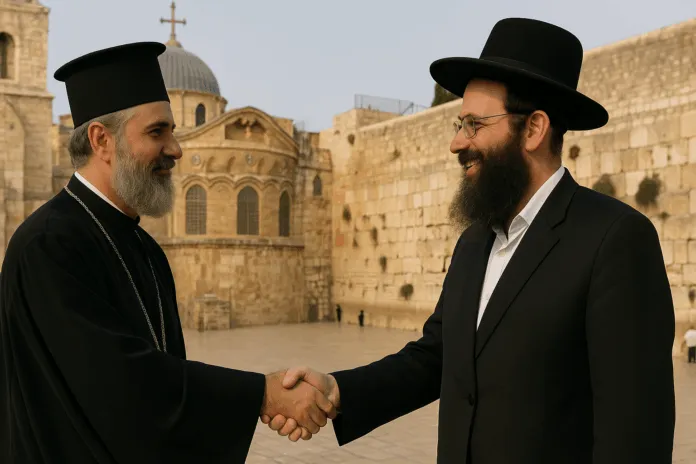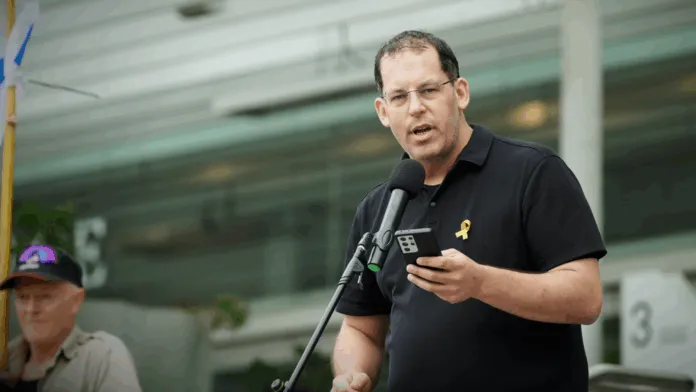Table of Contents
Dr Simon Smelt
Retired economist
The 1922 League of Nations Mandate to Britain was to establish “a homeland for the Jewish people” with the proviso that “nothing should be done which might prejudice the civil and religious rights of existing non-Jewish communities in Palestine.” Britain separated Transjordan (now Jordan) from the mandate territories, which instead became “Jew free.”
The land had enjoyed strong economic growth from the late 19th century onward, continuing into the mandate period. Jewish immigration and capital investment, built on the old Yishuv of established Jewish settlements, provided the dynamism that broke centuries of neglect, depopulation, and rent extraction. Funds came through gifts from rich families, such as the Rothschilds, and charitable donations from ordinary Jews in the diaspora.

Most of the mandate’s tax revenues, including land taxes, were raised from the Jewish community (four times more than from the Arabs by 1944)[1], demonstrating that it was Jewish businesses and farms that were lifting Palestine from a subsistence economy. The electricity generation and transmission companies were set up and run by Jews, as were the bus lines[2]. Towns and cities grew, fertile areas extended, trade increased, living standards improved, life expectancy rose. Among the many other spill-over benefits was the expansion of Arab citrus growing; the 1937 Peel Commission observed that this was substantially due to Jewish capital and know-how.

In 1914, Palestine’s population is variously estimated at 600,000 to 800 000, with 10 per cent plus Jews. By 1944 it was recorded at around 1.7 million, with approximately 30 per cent Jews[3]. From 1919 to 1941, Jewish immigration averaged some 15,000 per year, peaking in 1935 at 66,000. Such statistics demonstrated Britain’s fulfilment of its mandate obligation.

Less than 1,000 per year Arab immigrants were officially recorded. Such numbers capture only a small fraction of actual movement. Palestine’s economy was growing far ahead of its neighbours and there were no physical, military, cultural or language barriers to Arab immigration. People could just walk across. By contrast, European Jews arrived by sea in ships through official channels[4]. The 1930 Hope-Simpson Commission said the British practice of ignoring uncontrolled illegal Arab immigration displaced prospective Jewish immigrants. A 1939 survey stated “It is well known that a considerable movement of illegal immigration occurs across the borders of Palestine … No allowance has been made for illegal immigration.”[5]
Palestine was becoming less empty. Demographic study shows that the decline in Arab farmland per capita was primarily due to Arab population growth rather than displacement by Jews. By 1930, Jews owned some 1.2 million dunams of land (roughly 12 per cent of total arable land): 40 per cent purchased from foreign owners, 55 per cent from local effendi, five per cent from smallholders[6]. Properties which had been in the hands of large and medium owners were converted into communal or small holdings; this helped end the semi-feudal land regime in Palestine which had stymied investment and modernisation[7]. The 1922 mandate conditions required cultivatable government land to be released to Jewish settlers; instead, half was released to Arabs, two per cent to Jews.

The inflow of Jewish and Arab immigrants combined with rapid social and economic change destabilised relations between the two ethnic groups. In 1929, the Hebron massacre of Jews (including beheadings, castration, rape, and torture) was sparked by inflammatory pamphlets issued by the Grand Mufti of Jerusalem, Hajj Amin al Husseini, after Jews sang “The Wall is ours!” at the Wailing Wall. The long-established Hebron community were not oppressors, but al Husseini knew how to tap depths of hate in an insurrection still celebrated today. The Husseinis were a leading Arab family and he was originally appointed as Grand Mufti by the British to counterbalance offices held by a rival family. The Husseinis, like other effendi, were major sellers of land to the Jews. Similarly, Abdel Hadi, who vowed to make Palestine “a graveyard for all the Jews in the country”, had facilitated the transfer of 30,000 dunams of land to Jews[8]. “Arab nationalists who agitated against Jewish immigration by day and by night sold their land to the Jews,” as one diplomat put it[9].

The wider 1936–1939 Arab uprising, again led by al Husseini, was a reaction to a surge in Jewish immigration. Some 500 Jews and 250 British troops and police were killed; Arab fatalities exceeded 5,000, many the victims of Arab mobs[10]. One Arab leader said “Our rebellion has become a rebellion against the villages and not against the Government or the Jews.”[11] However, the uprising was successful in cementing al Husseini’s position and caused the British to severely curb further Jewish immigration. They also allowed Jewish self-defence groups to train and arm. Meantime, with the tightening of the quota for Jewish immigrants, the Royal Navy intercepted illegal shipping.
The uprising was Arab and Islamic, not the revolt of a distinct Palestinian people. During the mandate period, Jews, Arabs and the British indifferently used the term ‘Palestinian’ for local residents; Jews received Palestinian citizenship, the English language Jewish newspaper was the Palestine Post, etc. Radical Abdul-Hadi insisted to the Peel Commission, “There is no such country as Palestine. ‘Palestine’ is a term the Zionists invented.” In 1948, the Arab Liberation Army was unable to enlist many Palestinians: 90 per cent were foreign volunteers. The invading Arab armies in 1948 intended to carve up the territory, not establish a Palestinian state. Only after the 1967 war was the term “the Palestinian people” taken up. Zuhair Muhsen, military commander of the PLO, said, “There is no such thing as a Palestinian people … the existence of a separate Palestinian identity serves only tactical purposes.”
Post WW2, suggestions were made to ship Jewish refugees to Palestine. This later furnished the narrative that Europe dumped its ‘Jewish problem’ on the Arabs. In practice, Britain’s navy blockaded Palestine. Over 100,000 Jewish immigrants attempted to enter by sea. 1,600 drowned, 50,000 were held by the British in concentration camps in Cyprus; many were turned back, a few thousand succeeded. Bitter confrontations between British forces and Jewish insurgents in Palestine led to mutual executions of prisoners and the bombing of the British HQ in Jerusalem with over 90 deaths.
This was no cosy arrangement between Zionism and the British Empire. Senior British officials supported the Arab cause. Lt. General Evelyn Barker, regional commander 1946-47, passed military secrets to his Arab mistress and said he loathed the Jews. His policing reflected his views. Lt. General John Glubb formed Jordan’s Arab Legion and led them against Israel in the 1948–49 war.
The 1947 UN Commission’s plan for the Jewish state calculated boundaries based on demographics: its land borders were virtually indefensible and the Arabs retained most of the agricultural land. The plan was accepted by the Jewish side, not by the Arabs. Zionist leaders expressed their support for equal rights and for Arab participation in the new state. Israeli coins and stamps were inscribed in both Hebrew and Arabic. By contrast, the Arab League proclaimed “a war of annihilation.”
With the British withdrawal and the invasion of Arab armies, civil war turned into the 1948–49 War of Independence. The Jewish Quarter in the Old City of Jerusalem was captured by Jordan and all Jews expelled. An Arab commander commented “”For the first time in 1,000 years not a single Jew remains in the Jewish Quarter. Not a single building remains intact. This makes the Jews’ return here impossible.”
In the confusion, Jewish soldiers expelled Arab locals from their homes where heavy fighting was expected, notably in Jaffa and Lod, while Golda Meir pleaded with Arabs in the North to stay. Massacres and violations occurred on both sides in the war, but were not widespread. Arab leaders promulgated wild reports of Jewish atrocities, causing panic, and urged Arab residents to evacuate, giving a clear path for their armies. Over 500,000 Arabs fled Israel. In the wake of the war, over 500,000 Jews were expelled or fled from Arab countries to Israel, more going elsewhere. Thus, it was Arab nationalism – not European colonialism – that greatly reduced the Arab population and boosted the Jewish population of Israel.
Part 4 will summarize our findings.
1 Anglo-American Committee of Inquiry (1946) A Survey of Palestine: Prepared in December 1945 and January 1946, 2 Vols, Government Printer, Palestine. Available at: https://www.palestineremembered.com/Articles/A-Survey-of-Palestine/
2 Shamir, R. (2016) Electricity and Empire in 1920s Palestine under British Rule. N.T.M. 24, 451–480 Available at: https://doi.org/10.1007/s00048-017-0161-z
3 A Survey of Palestine, op.cit.
4 Mark Wischnitzer (1948) To Dwell in Safety: The Story of Jewish Migration since 1800, Philadelphia.
available at: https://archive.org/details/todwellinsafetys0000wisc/mode/2up
5 A Survey of Palestine, op.cit.
6 Frantzman, Seth & R Kark (2013) “The Muslim Settlement of Late Ottoman and Mandatory Palestine: Comparison with Jewish Settlement Patterns,” Digest of Middle East Studies, 22, 1, 74-93. Available at: https://doi.org/10.1111/j.1949-3606.2012.00172.x
7 Granott, A (1952) The Land System in Palestine, Eyre and Spottiswoode, London. Available at: https://archive.org/details/landsysteminpale0000agra/page/n5/mode/2up Granott remarks “desert spots were turned into islands of co-operative productivity.”
8 Quoted in Karsh, Efraim (2008) 1948: Israel, and the Palestinians, Commentary, May, 23-29. Available at: http://www.commentarymagazine.com/viewarticle.cfm/1948–israel–and-the-palestinians–annotated-text-11373
9 German consul, quoted in:
10 Kessler, Oren (2023) Palestine 1936: The Great Revolt and the Roots of the Middle East Conflict, Lanham
11 Quoted in Karsh, op.cit.
12 Quoted variously, e.g. https://www.israelandstuff.com/the-kgb-and-the-origins-of-the-palestinian-narrative
13 https://en.wikipedia.org/wiki/Aliyah_Bet
14 Quoted in: https://en.wikipedia.org/wiki/Islamization_of_Jerusalem
15 See: https://en.wikipedia.org/wiki/Killings_and_massacres_during_the_1948_Palestine_war Deir Yasin remains the only well attested massacre from the Israeli side.
16 See Karsh, op.cit. He also notes the lack of communal solidarity amongst the Arabs with villages and towns refusing to help outsiders.
This article was originally published by the Israel Institute of New Zealand.









